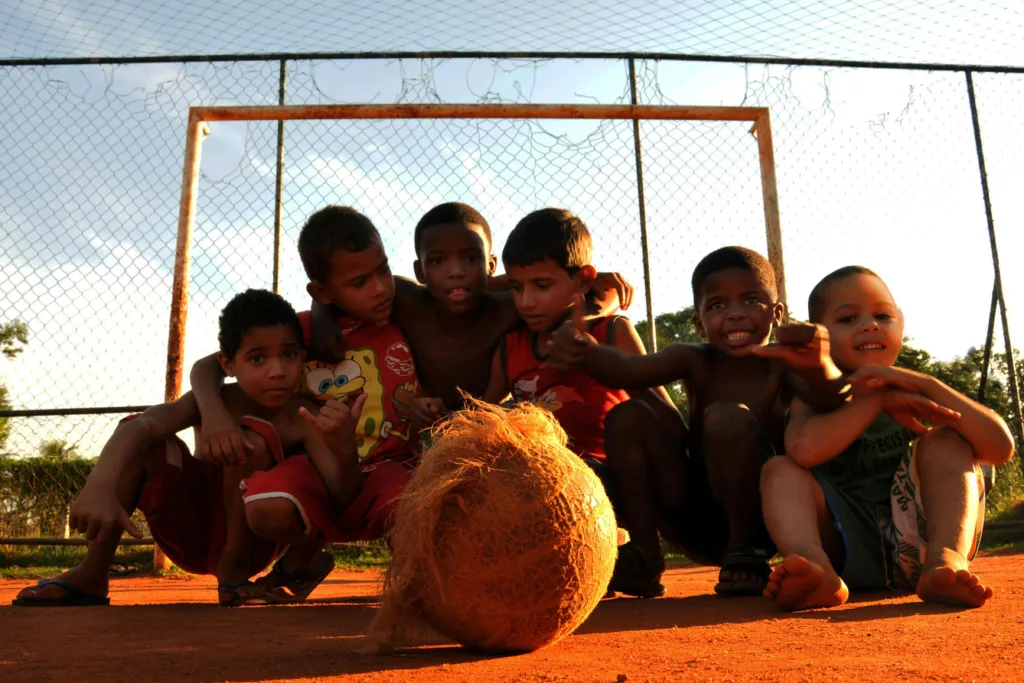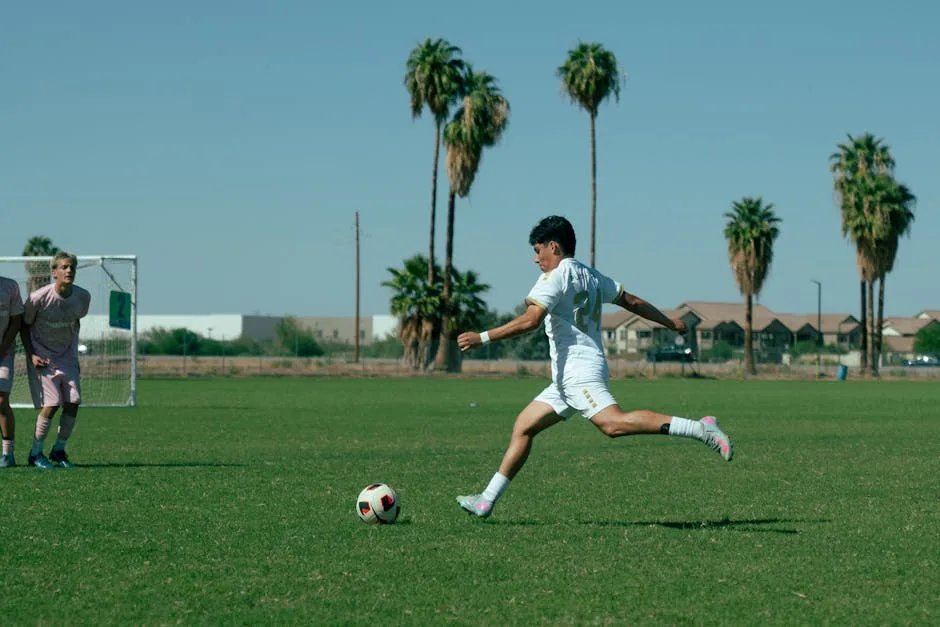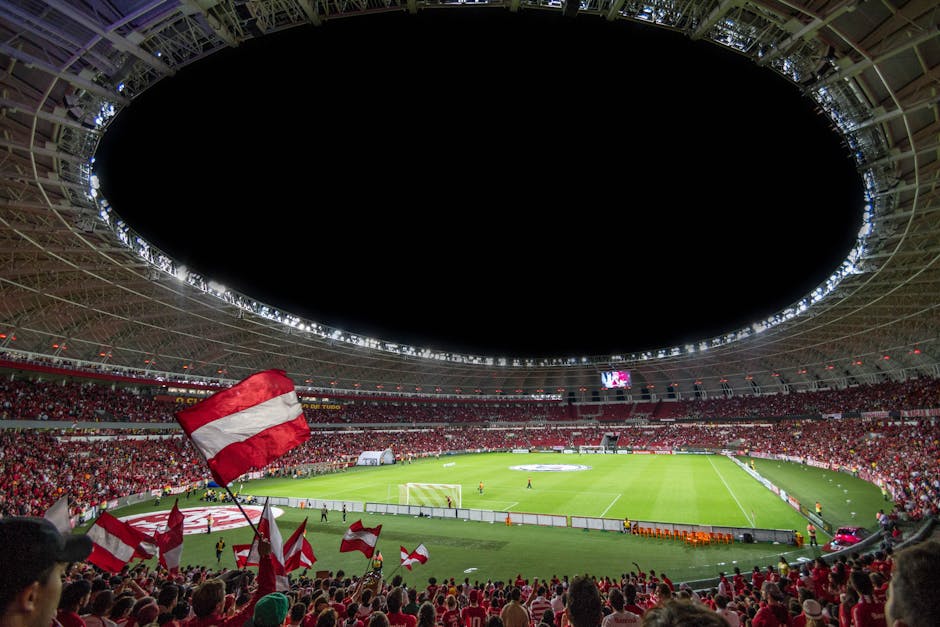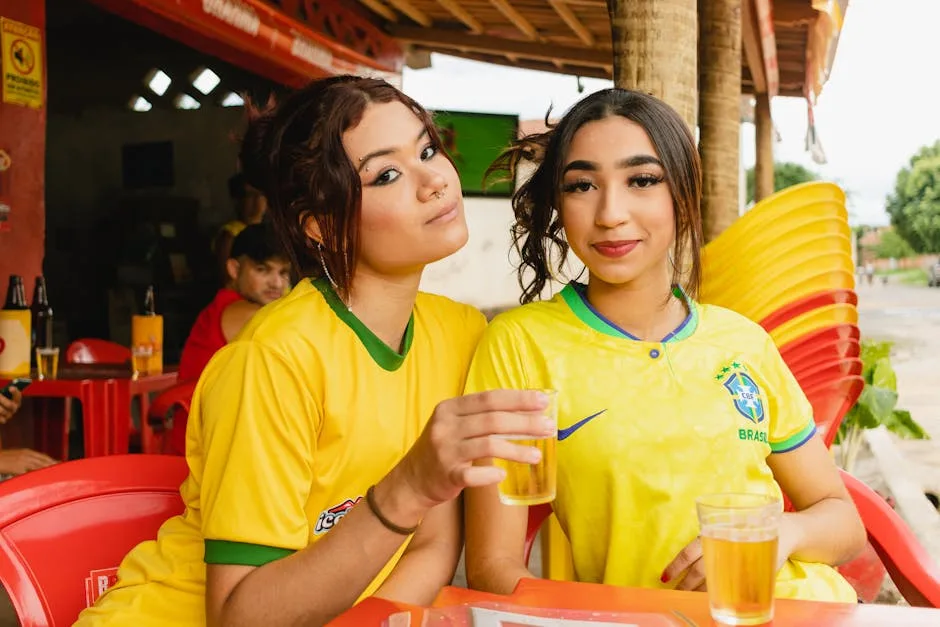- The Unmistakable Sound of Brazilian Football
- The Heartbeat of the Stands: Samba and the ‘Torcida Organizada’
- From the Favelas to the Pitch: The Rise of Funk Carioca
- The Anthems of a Generation
- The ‘Ginga’ Connection: Rhythm Embodied on the Field
- The Pre-Game Carnival: An Atmosphere Built on Beats
- A Global Symphony: How Brazilian Football Music Travels
- The Unifying Rhythm of Passion
The Unmistakable Sound of Brazilian Football
Close your eyes for a moment and imagine a big match in brazil. What do you hear? Of course, there’s the roar of the crowd, the referee’s whistle, and the satisfying thud of a ball hitting the back of the net. But listen closer. Underneath it all, there’s a pulse. A relentless, infectious rhythm. It’s the deep, booming heartbeat of a surdo drum, the sharp crack of a snare, and the heavy bassline of a funk anthem pouring from a nearby speaker. In Brazil, football isn’t just a game you watch; it’s a spectacle you feel, and that feeling is powered by music.
From the historic Maracanã in Rio de Janeiro to the modern Allianz Parque in São Paulo, the connection between music and the ‘beautiful game’ is more than just a coincidence—it’s the cultural DNA of the nation. Samba and Funk, two of Brazil’s most potent musical exports, are not just background noise. They are the engine of the matchday experience, shaping the energy in the stands, the swagger of the players on the pitch, and the very soul of the sport.
The Heartbeat of the Stands: Samba and the ‘Torcida Organizada’
To understand the sound of a Brazilian stadium, you first need to understand the torcidas organizadas. These aren’t just fan clubs; they are highly organized, passionate communities that live and breathe for their team. And their weapon of choice? Music. Specifically, the powerful, percussive force of Samba.
Long before kickoff, the bateria—the drum section of the torcida—assembles. They are the conductors of the stadium’s orchestra, and their instruments are the tools of their trade:
- The Surdo: The large bass drum that provides the foundational, heartbeat-like rhythm. Its steady thump is the pulse of the crowd.
- The Caixa: The snare drum that cuts through the noise with its sharp, military-style beat, driving the pace of the chants.
- The Tamborim: A small hand-held drum that plays complex, high-pitched patterns, adding a layer of syncopated excitement.
- The Agogô: The double-headed cowbell that adds a classic, melodic Samba flair to the mix.
Together, they transform sections of the stadium into a full-blown Carnival parade. The chants aren’t just shouted; they are sung to well-known Samba melodies, with lyrics rewritten to praise their heroes and taunt their rivals. This wall of sound does more than just encourage their own team; it creates an intimidating, overwhelming atmosphere for the opposition. It’s the famous “12th man” in its purest, most rhythmic form.
From the Favelas to the Pitch: The Rise of Funk Carioca
While Samba is the traditional soul of the stadium, a newer, more electrifying sound has taken over the locker rooms and goal celebrations: Funk Carioca. Born in the favelas of Rio de Janeiro, funk is raw, energetic, and defined by its powerful, infectious bass beats. It’s the voice of a new generation, and it has become inextricably linked with modern Brazilian football.
Today’s stars, many of whom grew up with this music, have made it their personal soundtrack. When a player like Neymar or Vinícius Júnior scores a goal, their celebration is often a choreographed dance to a popular funk hit. It’s a moment of pure, unadulterated joy and a nod to their roots. This isn’t just a celebration; it’s a statement of identity. They are bringing the culture of their neighborhoods onto the world’s biggest stages.
Funk music blasts from the speakers in the team’s training facility and is the go-to choice for pre-game locker room hype. Players share their favorite funk tracks on social media, giving fans a glimpse into the sound that fuels their performance. This has created a symbiotic relationship where football popularizes funk artists, and funk artists create anthems that define the players.
The Anthems of a Generation
The connection has become so strong that artists now write songs specifically about football and its stars. MC Guimê’s “País do Futebol” (Country of Football), featuring Neymar in its music video, became a massive unofficial anthem for the 2014 World Cup in Brazil. It captured the dreams of millions of kids who see football as a way to a better life, all set to a classic funk beat. These songs are more than just hits; they are cultural touchstones that bridge the gap between the idols on the pitch and the fans in the stands.
The ‘Ginga’ Connection: Rhythm Embodied on the Field
The influence of music on Brazilian football isn’t just auditory; it’s physical. It’s visible in the way the players move. It’s called ginga—a unique, fluid, and rhythmic style of play that looks more like dancing than dribbling.
Ginga has its roots in the movements of Capoeira, the Afro-Brazilian martial art that is itself a dance set to music, and the swaying rhythms of Samba. It’s a philosophy of creativity, improvisation, and joy. When you watch a player like Ronaldinho in his prime, with his no-look passes and mesmerizing footwork, you are seeing ginga in motion. When you see Neymar’s audacious step-overs, that’s ginga. It’s the physical manifestation of a musical culture, a way of playing that prioritizes flair and expression over rigid, robotic tactics.
This style of play is nurtured from a young age on the futsal courts and sandy beaches of Brazil, where close control and quick, rhythmic movements are essential. The beat is so ingrained in the players that their movements with the ball become an extension of it. They don’t just play football; they perform it.
The Pre-Game Carnival: An Atmosphere Built on Beats
The matchday experience begins hours before the first whistle, and it happens on the streets surrounding the stadium. The area transforms into a massive, open-air festival. The air is thick with the smell of grilled meat from street vendors and filled with the sounds of community and celebration.
You’ll see fans gathered in impromptu rodas de samba (samba circles), with people clapping, singing, and dancing as a few musicians play their instruments. A few blocks over, a car with a powerful sound system might be blasting the latest funk hits, creating a spontaneous street party, or baile funk. This pre-game ritual is essential. It’s where the energy builds, where rivalries are playfully stoked, and where the collective voice of the fans begins to synchronize to a common beat. By the time they enter the stadium, they aren’t just a crowd; they are a unified chorus, ready to provide the soundtrack for the next 90 minutes.
A Global Symphony: How Brazilian Football Music Travels
This uniquely Brazilian fusion of sport and sound has become one of the country’s most famous cultural exports. During any FIFA World Cup, the Brazilian fans are impossible to miss and impossible to ignore. Their vibrant yellow jerseys are always accompanied by the relentless drumming of their bateria, turning sections of stadiums in Qatar, Russia, or Germany into a corner of Rio. They bring the party with them, and the world loves them for it.
This influence has also permeated pop culture. Video game franchises like FIFA have famously curated soundtracks that regularly feature Brazilian samba, bossa nova, and funk tracks, introducing these rhythms to millions of young fans globally. The music has become synonymous with skillful, joyful football, cementing the cultural link on a global scale.
The Unifying Rhythm of Passion
Ultimately, the music of Brazilian football is the sound of its people. It’s the sound of joy in victory, as samba and funk parties erupt in the streets after a championship win. It’s the sound of resilience in defeat, as the drums continue to play in solidarity, promising a return. It’s a rhythm that connects players from humble beginnings to their roots and unites millions of fans from all walks of life under a single banner and a single beat.
So, the next time you tune in to watch a Brazilian team play, don’t just watch the ball. Listen. Listen for the pulse of the surdo, the energy of the funk beat, and the soulful melody of the chants. You’re not just hearing songs; you’re hearing the very heartbeat of Brazilian football.




